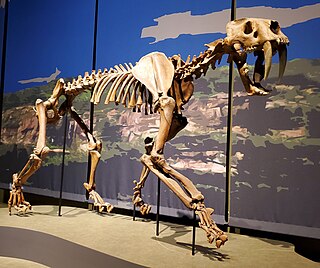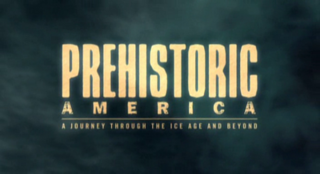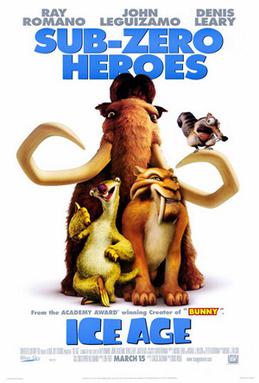
Pellucidar is a fictional Hollow Earth invented by American writer Edgar Rice Burroughs for a series of action adventure stories. In a crossover event, Tarzan, who was also created by Burroughs, visits Pellucidar.

The Problem of Pain is a 1940 book on the problem of evil by C. S. Lewis, in which Lewis argues that human pain, animal pain, and hell are not sufficient reasons to reject belief in a good and powerful God.

Machairodus is a genus of large machairodont or ''saber-toothed cat'' that lived in Africa, Eurasia and North America during the late Miocene. It is the animal from which the subfamily Machairodontinae gets its name and has since become a wastebasket taxon over the years as many genera of sabertooth cat have been and are still occasionally lumped into it.

Smilodon is a genus of felids belonging to the extinct subfamily Machairodontinae. It is one of the best known saber-toothed predators and prehistoric mammals. Although commonly known as the saber-toothed tiger, it was not closely related to the tiger or other modern cats. Smilodon lived in the Americas during the Pleistocene epoch. The genus was named in 1842 based on fossils from Brazil; the generic name means "scalpel" or "two-edged knife" combined with "tooth". Three species are recognized today: S. gracilis, S. fatalis, and S. populator. The two latter species were probably descended from S. gracilis, which itself probably evolved from Megantereon. The hundreds of specimens obtained from the La Brea Tar Pits in Los Angeles constitute the largest collection of Smilodon fossils.

Homotherium is an extinct genus of machairodontine scimitar-toothed cat that inhabited North America, South America, Eurasia, and Africa during the Pliocene and Pleistocene epochs from around 4 million to 12,000 years ago. In comparison to Smilodon, the canines of Homotherium were shorter, and it was probably adapted to running down rather than ambushing prey.

The La Brea Tar Pits is an active paleontological research site in urban Los Angeles. Hancock Park was formed around a group of tar pits where natural asphalt has seeped up from the ground for tens of thousands of years. Over many centuries, the bones of trapped animals have been preserved. The George C. Page Museum is dedicated to researching the tar pits and displaying specimens from the animals that died there. La Brea Tar Pits is a registered National Natural Landmark.

Nimravidae is an extinct family of carnivorans, sometimes known as false saber-toothed cats, whose fossils are found in North America and Eurasia. Not considered to belong to the true cats, the nimravids are generally considered closely related and classified as a distinct family in the suborder Feliformia. Fossils have been dated from the Middle Eocene through the Late Miocene epochs, spanning about 33.2 million years.

Walking with Cavemen is a 2003 four-part nature documentary television miniseries produced by the BBC Studios Science Unit, the Discovery Channel and ProSieben. Walking with Cavemen explores human evolution, showcasing various extinct hominin species and their inferred behaviours and social dynamics. The original British version of the series is presented by the British researcher Robert Winston; in the American version Winston's appearances and narration is replaced with narration by Alec Baldwin.

Machairodontinae is an extinct subfamily of carnivoran mammals of the family Felidae. They were found in Asia, Africa, North America, South America, and Europe from the Miocene to the Pleistocene, living from about 16 million until about 11,000 years ago.

The Lives of a Cell: Notes of a Biology Watcher (1974) is collection of 29 essays written by Lewis Thomas for The New England Journal of Medicine between 1971 and 1973. Throughout his essays, Thomas touches on subjects as various as biology, anthropology, medicine, music, etymology, mass communication, and computers. The pieces resonate with the underlying theme of the interconnected nature of Earth and all living things.
"How Sharper Than a Serpent's Tooth" is the fifth and penultimate episode of the second season of the American animated science fiction television series Star Trek: The Animated Series, the 21st episode overall. It first aired in the NBC Saturday morning lineup on October 5, 1974, and was written by Russell Bates and David Wise.
Monsters We Met is a documentary produced by the BBC that later aired as a special on Animal Planet in 2004 which also included footage from Walking with Beasts and Walking with Cavemen. The show used computer-generated imagery to recreate the life of the giant animals that lived during the last ice age and explains how early humans encountered them. It also features humans as the main reason for the extinction of all great animals.
The cat gap is a period in the fossil record of approximately 25 million to 18.5 million years ago in which there are few fossils of cats or cat-like species found in North America. The cause of the "cat gap" is disputed, but it may have been caused by changes in the climate, changes in the habitat and environmental ecosystem, the increasingly hypercarnivorous trend of the cats, volcanic activity, evolutionary changes in dental morphology of the Canidae species present in North America, or a periodicity of extinctions called van der Hammen cycles.

Wild New World is a six-part BBC documentary series about Ice Age America that describes the prehistory, landscape and wildlife of the continent from the arrival of humans to the welcome of the Ice Age. It was first transmitted in the UK & JP on BBC Two from 3 October to 7 November 2002. Like several other BBC programmes, it contains both computer graphics and real-life animals. Occasionally, footage of non-American counterparts of the extinct North American beasts are used in juxtaposition with footage of native American animals, like the pronghorn.

The Early Pleistocene is an unofficial sub-epoch in the international geologic timescale in chronostratigraphy, representing the earliest division of the Pleistocene Epoch within the ongoing Quaternary Period. It is currently estimated to span the time between 2.580 ± 0.005 Ma and 0.773 ± 0.005 Ma. The term Early Pleistocene applies to both the Gelasian Age and the Calabrian Age.

Ice Age is a 2002 American animated adventure comedy film produced by Blue Sky Studios and distributed by 20th Century Fox. The film was directed by Chris Wedge and co-directed by Carlos Saldanha from a screenplay by Michael Berg, Michael J. Wilson, and Peter Ackerman, based on a story by Wilson. It features the voices of Ray Romano, John Leguizamo, Denis Leary, Goran Višnjić, and Jack Black. Set during the days of the Pleistocene ice age, the film centers around three main characters—Manny (Romano), a no-nonsense woolly mammoth; Sid (Leguizamo), a loudmouthed ground sloth; and Diego (Leary), a sardonic saber-toothed tiger—who come across a human baby and work together to return it to its tribe. Additionally, the film occasionally follows Scrat, a speechless "saber-toothed squirrel" (Wedge), who is perpetually searching for a place in the ground to bury his acorn.

Paleontology in Florida refers to paleontological research occurring within or conducted by people from the U.S. state of Florida. Florida has a very rich fossil record spanning from the Eocene to recent times. Florida fossils are often very well preserved.

Paleontology in Nebraska refers to paleontological research occurring within or conducted by people from the U.S. state of Nebraska. Nebraska is world-famous as a source of fossils. During the early Paleozoic, Nebraska was covered by a shallow sea that was probably home to creatures like brachiopods, corals, and trilobites. During the Carboniferous, a swampy system of river deltas expanded westward across the state. During the Permian period, the state continued to be mostly dry land. The Triassic and Jurassic are missing from the local rock record, but evidence suggests that during the Cretaceous the state was covered by the Western Interior Seaway, where ammonites, fish, sea turtles, and plesiosaurs swam. The coasts of this sea were home to flowers and dinosaurs. During the early Cenozoic, the sea withdrew and the state was home to mammals like camels and rhinoceros. Ice Age Nebraska was subject to glacial activity and home to creatures like the giant bear Arctodus, horses, mammoths, mastodon, shovel-tusked proboscideans, and Saber-toothed cats. Local Native Americans devised mythical explanations for fossils like attributing them to water monsters killed by their enemies, the thunderbirds. After formally trained scientists began investigating local fossils, major finds like the Agate Springs mammal bone beds occurred. The Pleistocene mammoths Mammuthus primigenius, Mammuthus columbi, and Mammuthus imperator are the Nebraska state fossils.















